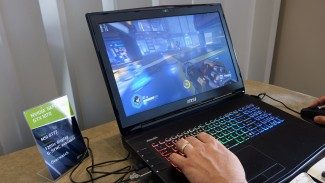With the latest generation of NVIDIA GPUs, the company opted to stick what they say are desktop-equivalent cards into the next generation of gaming laptops, putting VR Ready performance into highly portable systems. How do they handle? Ritchie Djamhur takes the Asus GL502VS with GTX 1070 for a spin.
Earlier this month Nvidia announced that their next generation GTX 10-series GPUs would find their way into a wide range of gaming notebooks from top manufacturers, and further that those GPUs would no longer bear the ‘M’ (for ‘Mobile’) designation which denoted a significant decrease in performance compared to their desktop brethren. This time around, the company says that the GTX 1080, 1070, and 1060 cards found in gaming laptops are within 10% of the performance of their desktop counterparts, making all of them ‘VR Ready’.
Given the substantial challenges that facing notebooks compared to a desktop (size, heat, power, etc), that claim certainly raises a few eyebrows. And yet in our hands-on with several of the GTX 10-series equipped laptops, VR performance impressed, with smooth 90 FPS rendering from demanding VR titles like Raw Data and Pool Nation VR.

In the video above our friend Ritchie Djamhur from Ritchie’s Room finds the same smooth VR gameplay from the Asus GL502VS equipped with the mobile GTX 1070. Running the notebook with both the Oculus Rift and the HTC Vive, he found flawless VR gameplay even on titles like Trials on Tatooine.
“[Judging from the VR performance] I wouldn’t have known I was on a notebook if I wasn’t the one that set it up,” Djamhur said.
Impressively, Nvidia says this new generation of VR Ready laptops can come in form-factors as thin as 18mm and as light as 4 pounds. While the Asus GL502VS on display here will run you a hefty $1,700, the 1060-equipped Asus GL502VM can be had for $1,400.







